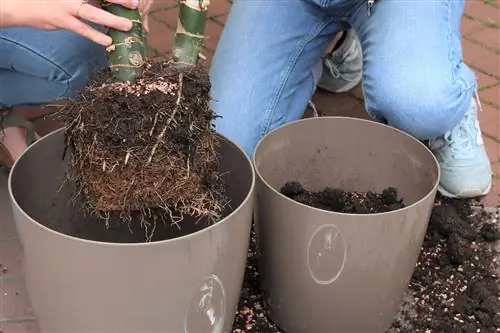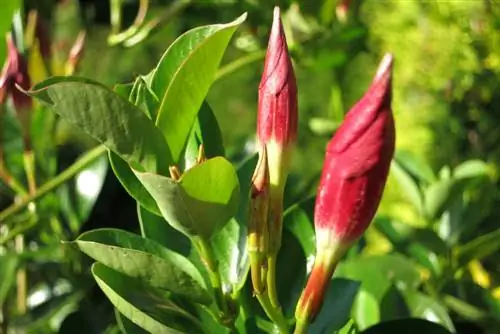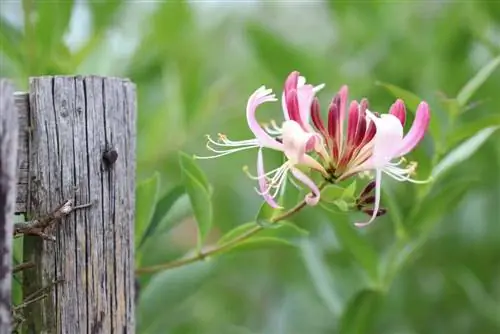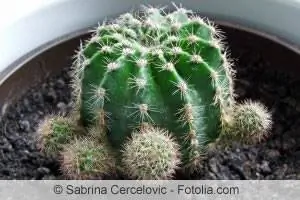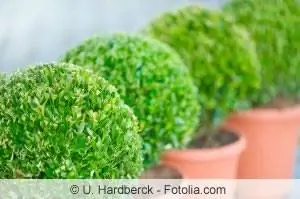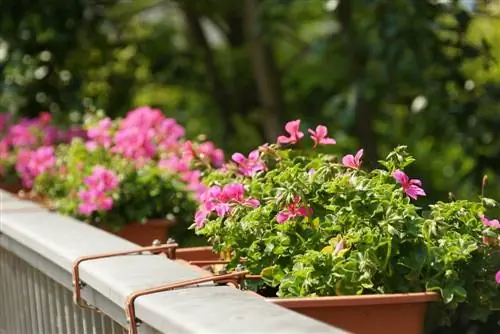- Author admin [email protected].
- Public 2023-12-17 03:39.
- Last modified 2025-01-24 12:45.
Some plants want to be planted in new soil every year. Others only appreciate repotting as a young plant. A plant always shows a lack of space when it blows up the clay pot or literally digs up the substrate with its roots. Roots growing out of the drainage hole also indicate that there is no longer enough space in the pot. You can find out exactly which plants these are in plant descriptions and plant portraits.
The right repotting time is always spring, shortly before the new growth phase begins. The new pot shouldn't be a lot bigger than the old one; it's better to cut back the old roots a little. As a rule, houseplants shouldn’t get too big. First, moisten the substrate so that it can be removed more easily from the pot. Then carefully turn the plant out of the pot, never pulling it out. Be sure to water new clay pots beforehand, otherwise the clay will suck all the moisture out of the soil. Place drainage downwards in large pots made of gravel or pottery shards. Fill the substrate into the pot so that the plant sits in the pot as before, shake the old substrate loosely from the roots and place the plant in the new pot and fill with new substrate up to a watering edge as thick as a thumb. Water thoroughly and keep warm for now.
When is it time to repot?
For the vast majority of all potted plants, it is not particularly difficult to determine the right time to repot.
It's best to check the roots of your houseplants every now and then. If the pot is completely rooted, it is time to repot the plant. The best time for this is spring, which has enough warmth and brightness to encourage the plants to grow. However, if repotting is necessary in summer due to strong root growth, most plant species can tolerate this without any problems.
Here are the most important points that indicate the need for a larger plant pot:
- The existing plant pot is almost completely rooted.
- You can tell when you notice roots that have worked their way to the surface of the earth.
- If this is not the case, but the plant is slowing down in growth, lifting it out helps: If you see more roots than soil at the bottom of the pot, it is time to repot.
- Seedlings can and should be moved to larger pots when they have gained a certain strength.
- Plants that are intended to overwinter well wrapped up outside can be given larger pots before the existing soil has completely rooted, which will not freeze through so easily.
- Young flowering plants usually grow quite eagerly in the first few years; if they are repotted every year, they always have enough space for root development.
- Older plants should allow their roots to mature slowly; they are only repotted when the root mass fills the pot well.
- Plants that have become so large that larger pots are no longer available are occasionally repotted in the same pot, usually with the root ball trimmed and with fresh soil.
- When the root ball is trimmed, the upper part of the plant is also pruned so that the above-ground and underground plant mass is in balance.
- Spring is the right time for repotting, for plants that are moving outside from winter quarters indoors, but only after a period of acclimatization.
- Remember that repotting is always stressful for the plants, and pruning or fertilization should only be carried out after the plant has had a rest period.
Which pot is suitable?
Basically any conventional flower pot is suitable for repotting a plant. Most of the time everyone can follow their own taste here. Clay pots may be perceived as more beautiful and rustic, but you should be aware that plants in clay pots also need to be watered more often. When choosing a pot, it is also important to make sure that it is about 4cm larger than the previous pot. If the circumference is too large, the pot will not be rooted sufficiently well, which can lead to a loss of stability of the plant.
Preparation
Depending on the pot you choose, some preparatory measures should be taken before repotting:
Clay pots, for example, should be watered well in a container with water for a few minutes before being repotted, otherwise they will remove the moisture from the fresh soil too quickly. Immediately before filling with soil, this type of pot should be dried or at least drained sufficiently, as unsightly stains can appear on the outside of the pot if soil sticks to it.
Used pots should also be cleaned with hot water and a little environmentally friendly soap. In addition to soil and root residues, care must also be taken to ensure that lime deposits are also thoroughly removed. This type of pot should also be rubbed dry afterwards.
Instructions in 4 steps
Step 1
Before you turn to the actual plant, the new pot should be prepared in advance. First, a layer of grit, pebbles or pottery shards should be placed on the bottom to ensure optimal drainage in the pot. (Omit this step for swamp plants). In a further step, soil is added to the drainage, which forms the base for the plant's root ball. The new substrate should be filled so high that there is still a few two fingers of space between the edge of the pot and the surface of the plant.
Step 2
Now the plant should be lifted out of the old container just above the soil surface with a slight upward pull. If the roots are difficult to loosen, tapping the edge of the pot can help. If roots grow out of the bottom of the pot, they must also be removed.
Step 3
After the plant has been removed from the old substrate, it should be checked in a sideways position for brown or dry root parts. If such parts are present, remove them with a sharp knife.
If the roots are very overgrown, we recommend loosening them up slightly with your fingers.
Step 4
In this last step, the plant is placed in the newly prepared pot and filled with soil all around. The plant is lightly pressed with your fingers or a garden tool and thus fixed in the new substrate. It is important to only press lightly and not too hard, otherwise the soil will no longer be permeable to water. Root or plant parts could also be damaged.
Finally, water the newly transplanted plant.
Important information at a glance again
- Water clay pots in advance
- Cleaning used vessels
- Pot size: 4cm larger than old vessel
- Insert drainage
- Cleaning root balls
Specialists have special needs for their environment
There are a number of potted plants for which the plant pots should be observed a little more closely - sometimes when purchasing them:
- Azaleas are often sold in pots that are too small; they should be given at least half as much soil as there is plant mass, so if in doubt, they are transplanted into a larger pot immediately after purchase.
- Azaleas also like a permanently moist root ball, which you can provide them with conveniently and without the risk of harmful waterlogging by placing the plants in a clay pot in a second soil-filled pot, this makes irrigation easier to control.
- Tree ferns need quite large pots in order to be able to develop plenty of strong fronds in the upper area, so they also usually have to be replanted immediately after purchase.
- This should be done carefully and without damaging the roots. It is best to place the entire root ball in a new pot, which should be large enough so that you can water the tree fern from above.
- Lychee plants are also sensitive if you touch their roots when repotting, there is usually a core in the middle, so you should also replant the closed root ball and then surround it with fresh soil.
- Angel trumpets will grow larger the larger their plant pot is, so they actually want to be repotted every year.

